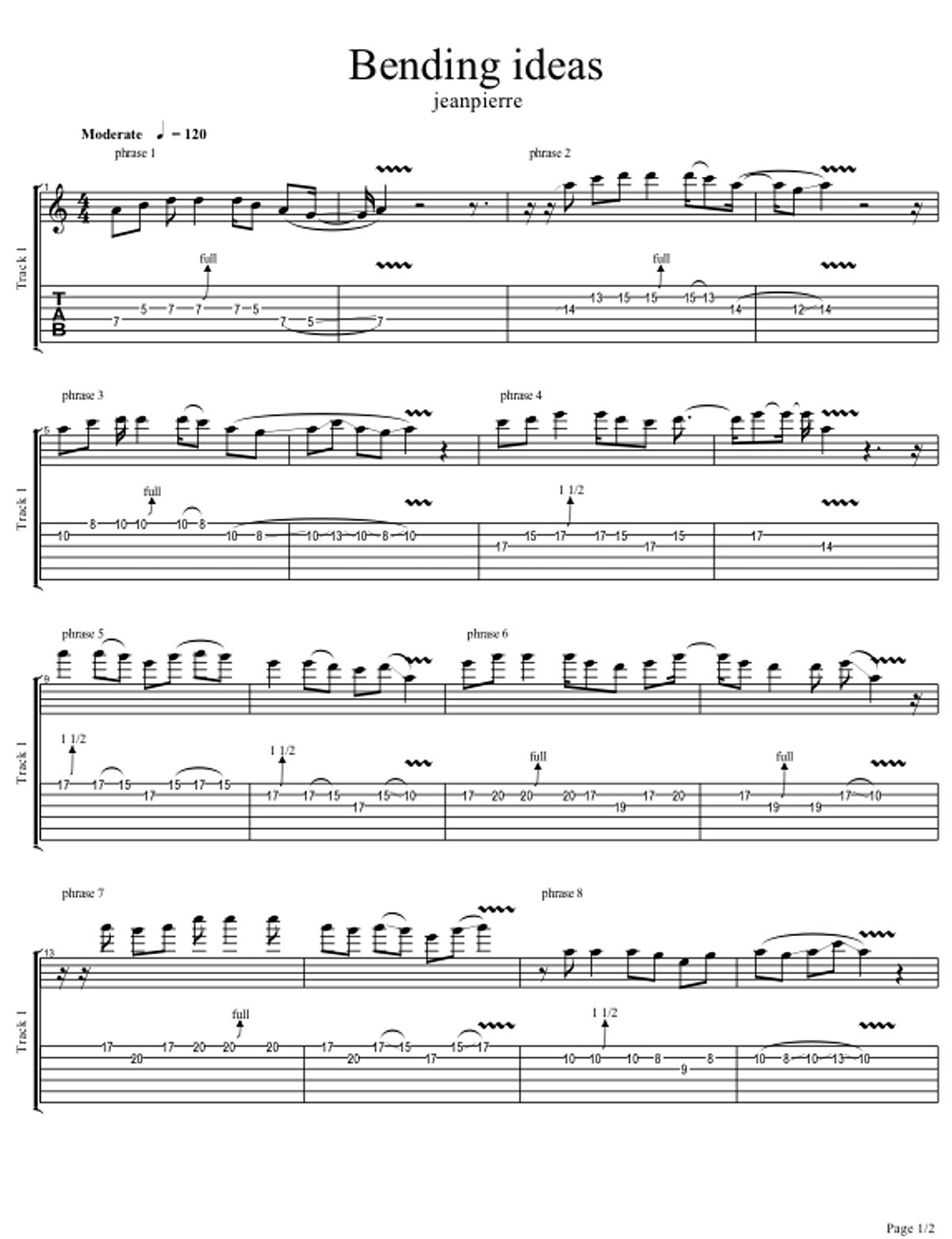As a guitar teacher, one of the lessons I love teaching is the one about bending. The reason is because it's one of the most expressive and powerful techniques that guitar can offer. Knowing how to bend is the most essential 'expression' tool alongside vibrato every guitar player should work hard to develop to the fullest.
Our lesson today focuses on the Minor pentatonic scale which uses this formula for construction using any root T 1/2 T T T 1/2 T. We'll be using the A Minor pentatonic hence these notes A C D E G. When trying out the ideas be sure to check the bending distances used, because I'm using all three which result from the minor pentatonic scale i.e. tone, tone-and-a-half and two-tone bends. Be attentive to the rhythms used so that you can play them with the nuances and expression they were written with.
Try to add vibrato to the notes and places I've written it for, but feel free to add it to other notes if you wish. Do not overdo it though, as then the surprise and 'fire' will be lost!
I've tried to move the scale to many different locations and registers on the fret board so that you can capture the different texture the guitar can take when using this method. Remember that a guitar can whisper like a breeze, sing like a bird but then roar like a lion! So be sure to look for these and other sounds while you play these phrases. After you get the hang of these examples try to 'improvise' on them by adding more intensity or more accents to the bends. Use different types of vibratos, and add slides to join phrases together. The options are unlimited here. You just need to 'look' for them!
But all this would sound empty if not used within a solo or musical idea. Like the saying goes, "You will really know a scale when you can create a great solo with it." What I showed you today should act as a springboard for your musical artistry. This will come into action the next time you solo on a blues or some other type of rhythm that calls for the minor pentatonic to be used upon. There you can measure your improvisational skills and listen to your sense of time while you 'jam' these ideas. Be sure that your guitar is in tune with whatever you're playing against. That will be crucially important! Remember to move this lesson and everything else you learn to all keys. That should always be on your practice agenda!
I'm sure that your playing will be enriched with these ideas as they're not the 'usual' magazine licks. But the best advice I can give you is to go and listen to great players solo on the blues and other music that the guitar is evident in. That will be an invaluable experience as the more you listen and hear a great musician play, the greater the chance you can get to sound like him, which in time will make you sound more like yourself! After all that's what we're all after as musicians no?


Jean-Pierre Zammit is a guitarist and instructor from Malta who has been playing guitar since the age of 14.
Zammit uses complex techniques, time shifts and scales in his writing, and always puts the song and the message he wants to portray first.
His is endorsed by Music Man guitars to use their Axis BFR models and Ernie Ball strings.